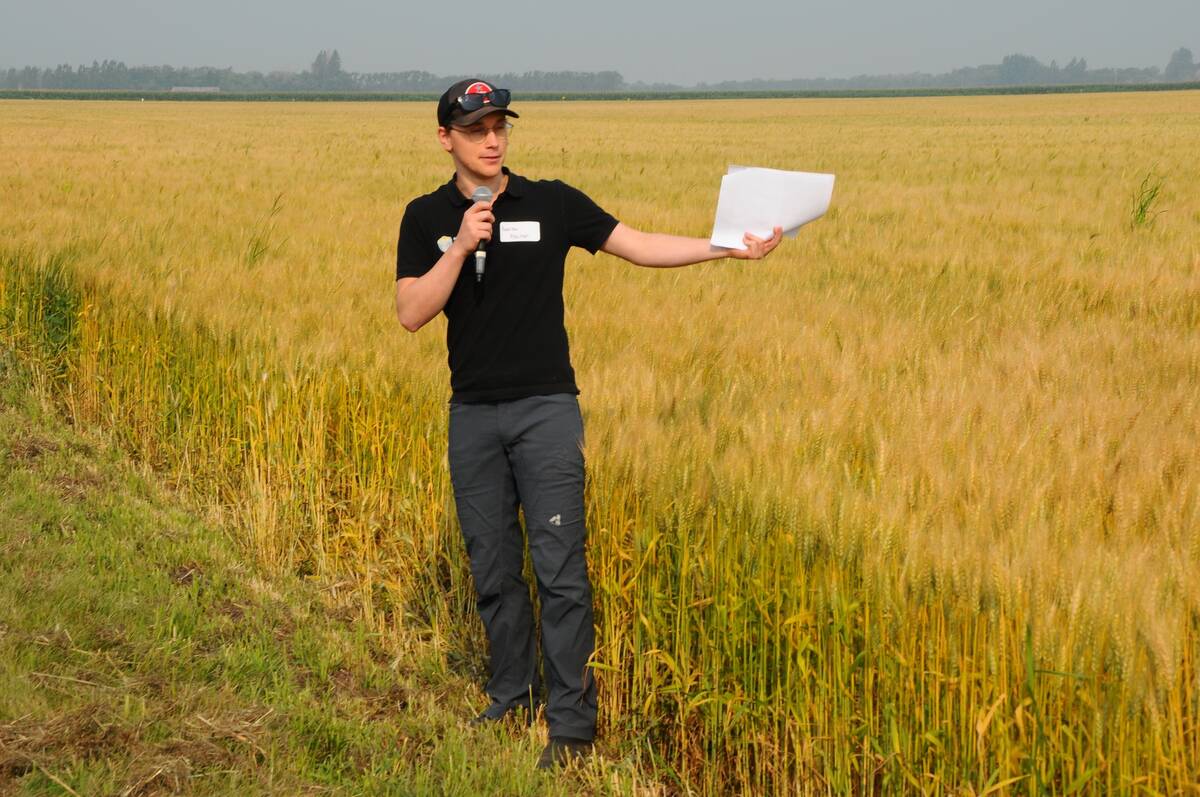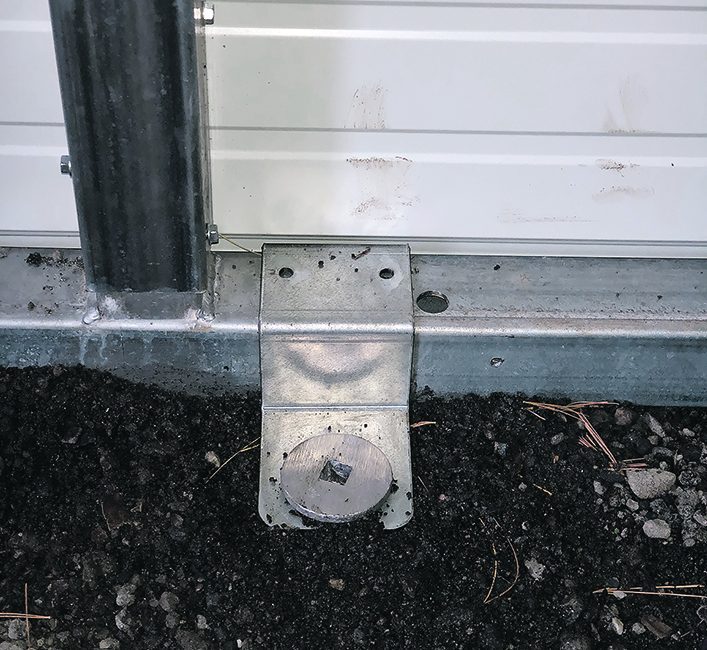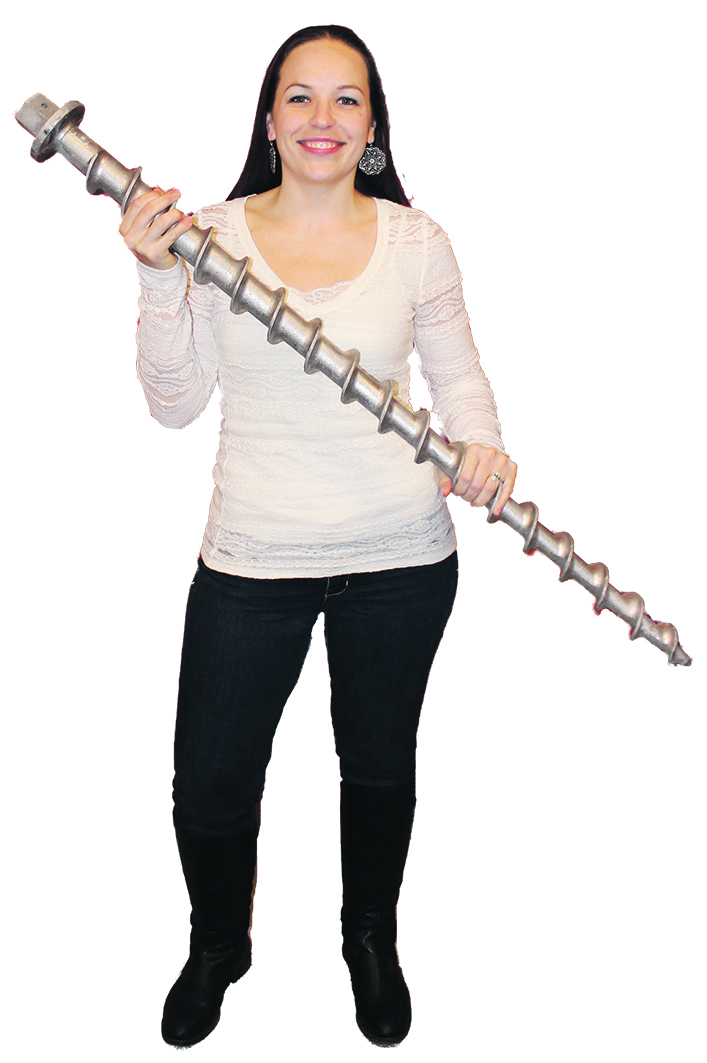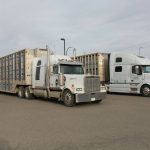Fast, secure and durable, the metal anchors can be used to augment traditional concrete foundations or stand on their own
Grain farming across the Prairies has evolved immensely since the turn of the new century. Every year there are more acres, bigger equipment and larger yields.
The culmination of farm growth has also required more grain storage space and larger grain handling units, such as grain dryers.
However, the bigger the grain storage or handling unit, the more structural support is required. This is where screw piles enter the conversation.
Read Also

On-farm research translates science into ‘farmer speak’
Manitoba’s three major agriculture grower groups support farm-level research to test crop science under the shifting conditions of real farmer fields.
Techno Metal Post is a helical spire company with outfits across Canada that can install screw piles up to 65 feet deep with a load-bearing weight of up to 45,000 pounds.
“We can support absolutely anything concrete can support,” said Jessie Touzin, who owns and operates a Techno Metal Post dealership on Vancouver Island.
Helical screw piles, or earth anchors, have been used for more than 150 years as moorings for a variety of structures or vessels.
Drilled into the ground, the screw piles can hold down cables for support against wind and other elements, providing stability to grain structures. Or they can provide stable footing in place of other structural bases such as concrete.
They have not been commonplace for structures across Canada, although they are growing in popularity.
“They’re definitely cheaper than concrete and they’re quicker to install,” Touzin said.
“We show up, we drill, say, 10 holes easily in a day, and you start building or placing whatever it is you want on it that day.”
Not only is it quicker and easier to install, but Touzin says the ecological footprint is also much smaller compared to concrete, which requires more digging and contains contaminants such as calcium silicate.
And for soil across the Prairies that sees heavy ground frost and shifting, the company has a polyethylene green sleeve that slides up and down the shaft with the ground to ensure the shaft remains locked in place.
These helical screw piles are versatile and can be drilled into almost any soil, including rock and sand.
James Cowan, assistant operations manager at Versapile, said the company’s helical pile projects rely on geotechnical assessments and engineering processes to ensure screw piles are the best fit for the situation.
“If a geotechnical company came in and dug three bore holes, they produce an assessment within that recommending what bases would be appropriate for it,” said Cowan.
“If it’s particularly hard ground, or there’s lots of obstructions subsurface, then helical won’t work.”
If the ground is solid rock or has large boulders under the surface, Cowan said there are times when the area can be dug out and backfilled so the screw piles will work.
After getting the OK from the geotechnical assessment, the company takes the information to a pile engineer who designs the piles specific to the ground and structure to build an accurate and quality base.

However, it doesn’t necessarily mean helical piles will be the base chosen for the job.
“I find it comes down to preference,” said Cowan.
“There are structural engineers that aren’t overly aware of helical piles, so they don’t use them. The ones that are aware are happy to use them. They know the instances where they are a good solution.”
Versapile, a certified Aboriginal business, contracts many different jobs, largely transmission and communications towers in Manitoba. Cowan said more people in different commercial areas are starting to see the benefits in choosing screw piles.
“It’s usually a cost effectiveness thing,” said Cowan.
“When you’re dealing with concrete, you’ve got a time between getting the concrete in, curing it, pouring it, curing it. There’s a wait time, and time is money.”
Putting bins down is sometimes a spur of the moment, harvest-time decision. Having an efficient option in crunch time can be crucial.
For smaller storage units and dryers, there are lighter, more easily accessible screw piles, such as the ones provided by American Earth Anchors.

The Rhode Island based pile company wanted to provide an anchor that was easily installed and removed for use by the military, so these anchors can temporarily tie down large structures using just an impact, then be removed and reused when the military would move.
“The anchors can be reused, or permanent,” said Cy Henry, president of American Earth Anchors.
“The anchors can be unscrewed and replaced, but at the same time, because they’re aluminum, they aren’t going to rust. They’re very lightweight and very strong, so they can be permanent as well.”
These screw piles can be used as quick tethers for building support or they can provide a base for any standing structure, providing a sturdy and reliable footing for smaller grain storage units.
All the installation needed for these piles is a small pre-drilled hole and a strong impact driver.
“People will replace concrete footings either for pullout or for down pressure and build right on top with brackets and bolt them right on,” said Henry.
Depending on the soil, the larger American Earth anchors can get up to 10,000 lb. of pull-out weight, which is also the amount of down pressure the piles hold up.















